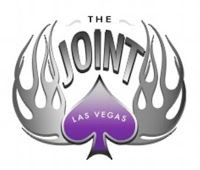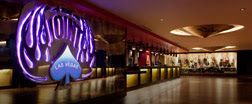In a nonprecedential ruling, the U.S. Court of Appeals for the Federal Circuit upheld the TTAB's decision of April 4, 2018 [TTABlogged here], ruling that substantial evidence supported the Board's finding that the mark THE JOINT (in standard character form) is merely descriptive of "Restaurant, bar and catering services" and of "Entertainment services, namely, live musical performances, shows, and concerts; and nightclub services," and lacks acquired distinctiveness. The court declined to consider the Board's alternative finding of genericness. In re JC Hospitality LLC, Appeal Nos. 2018-2048 and 2018-2049 (Fed. Cir., February 28, 2020) [nonprecedential].

Mere Descriptiveness: The Board relied on dictionary definitions (e.g., "[a]n establishment of a specific kind, especially one where people meet for eating, drinking, or entertainment") and media references in finding the proposed mark to be merely descriptive. It concluded that the mark ""immediately conveys the idea of a business establishment that provides live musical performances, shows, and concerts, and nightclub, restaurant and bar services."
Appellant argued that, even if the mark is descriptive of its services, it is registrable as a double entendre because it is "a playful or ironic reference to 'prison' instead of its services." The Board, however, found insufficient evidence that consumers would associate "the concept of 'the joint' as a prison with [Appellant's] entertainment services, nightclub services, restaurants, bars, or catering services." The court agreed, concluding that substantial evidence supported the Board's finding that THE JOINT is not a double entendre for the involved services.

Acquired Distinctiveness: The Board considered Appellant's evidence of use of the proposed mark since 1995, $12M in marketing expenditures, $104M in revenue, and various media references. However, because of the "highly descriptive nature" of the mark, the Board found these proofs inadequate. It noted that the services are offered at a single venue in Las Vegas (the Hard Rock Hotel and Casino), and it deemed the sales and advertising figures unpersuasive "because there was no context for how those figures compared to similar restaurants and nightclubs." The Board also noted that the mark THE JOINT often appeared along with other marks, and so "it is unclear which mark . . . attracts public attention."
Appellant argued that the Board required an impossible level of evidence, that its other marks were used sporadically, and that the Board erred in calling into question which marks garner public attention.
The court disagreed with Appellant on all counts. "The Board correctly determined that a high level of proof was required to show acquired distinctiveness," and therefore it was not error to challenge appellant's sales and advertising evidence, particularly in light of the overlap of appellant's various marks. "Given the prominence of 'Hard Rock' and 'Hard Rock Hotel & Casino' in the evidence submitted, and the relationship of those marks to the applied-for services," the court was not persuaded that those marks are of secondary significance.
Therefore, the court concluded that the Board's finding that appellant failed to prove acquired distinctiveness was supported by substantial evidence.
The content of this article is intended to provide a general guide to the subject matter. Specialist advice should be sought about your specific circumstances.
